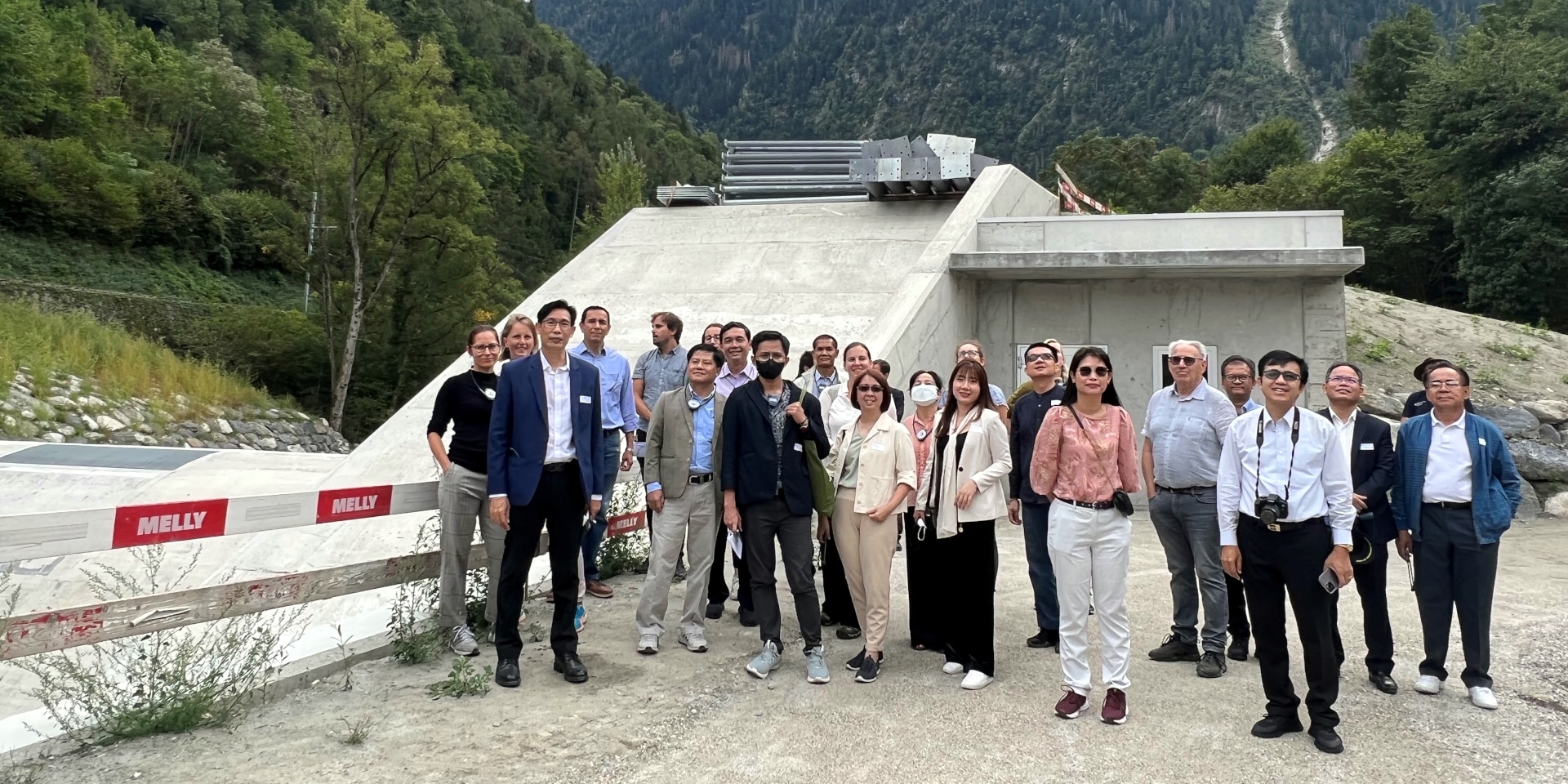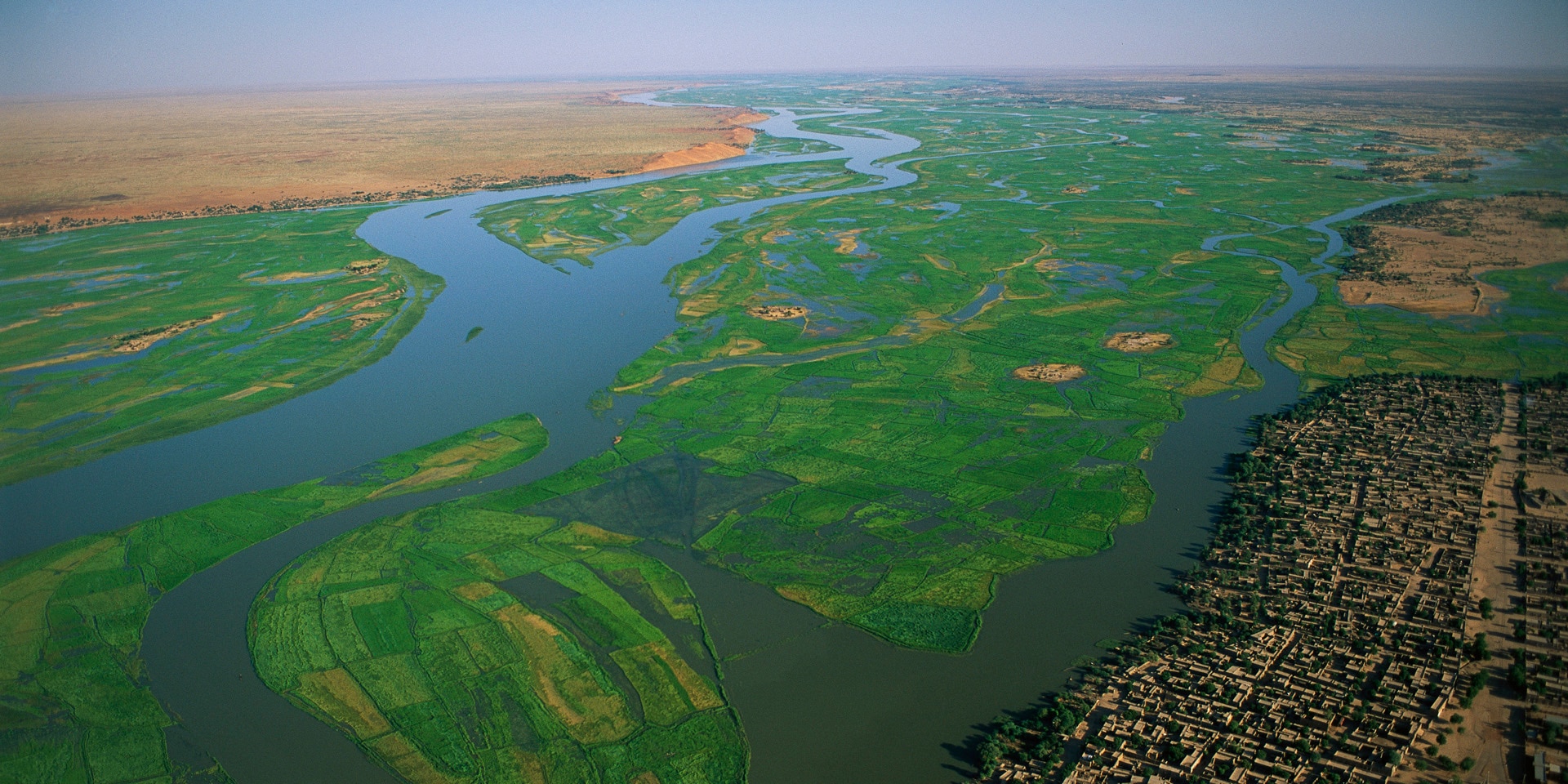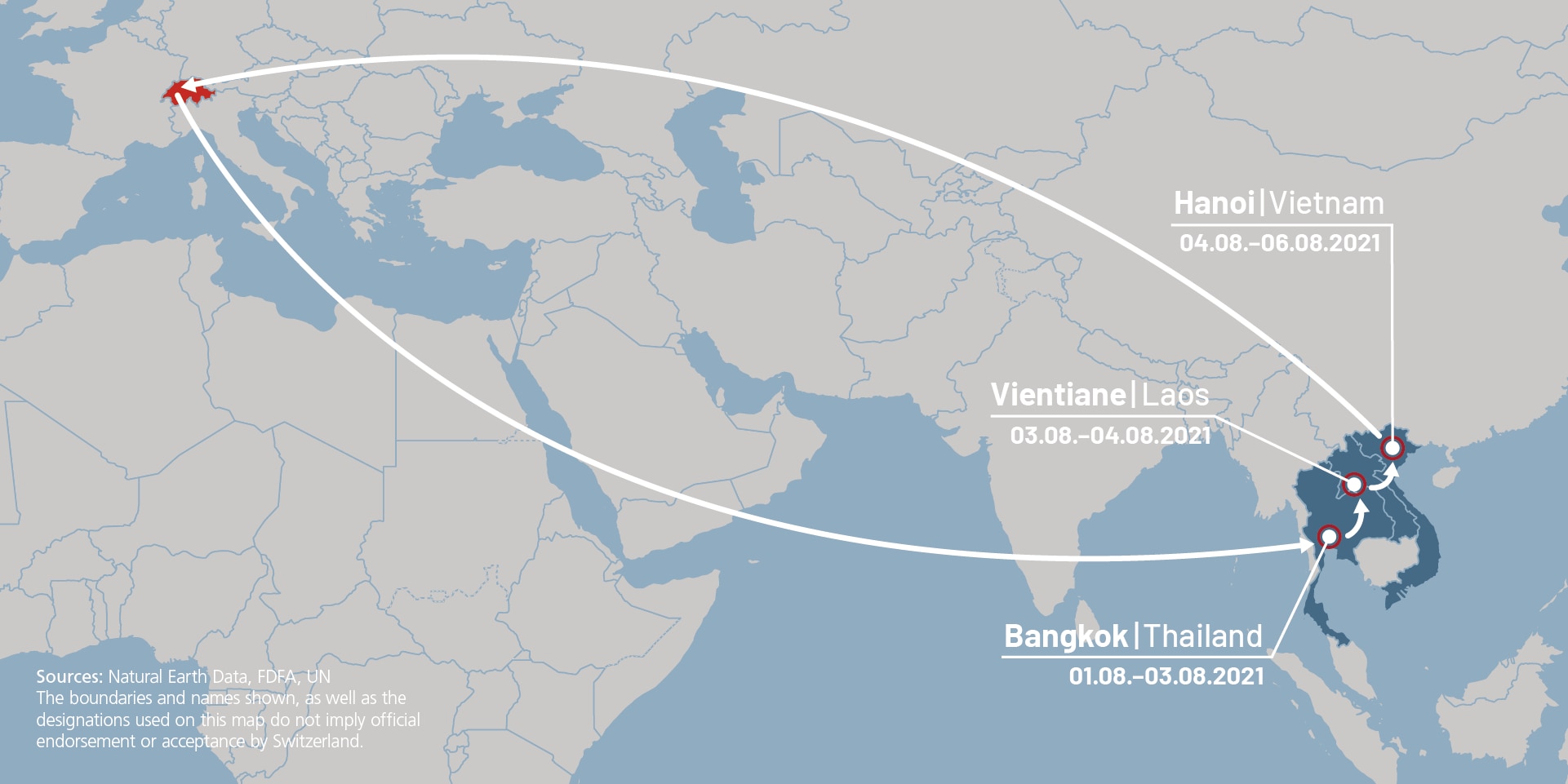"The challenges facing Switzerland are also our daily reality"
We interviewed Phonepaseuth Phouliphanh, secretary general of the Lao National Mekong Committee, in Martigny, a town located at a large bend in the River Rhône, during a study trip to the heartland of Swiss water management expertise. He spoke with us about his impressions and the best practices he observed during this visit, which was organised by the Swiss Agency for Development and Cooperatio. Read on to find out more about the common challenges we face and our cooperation for a sustainable future.
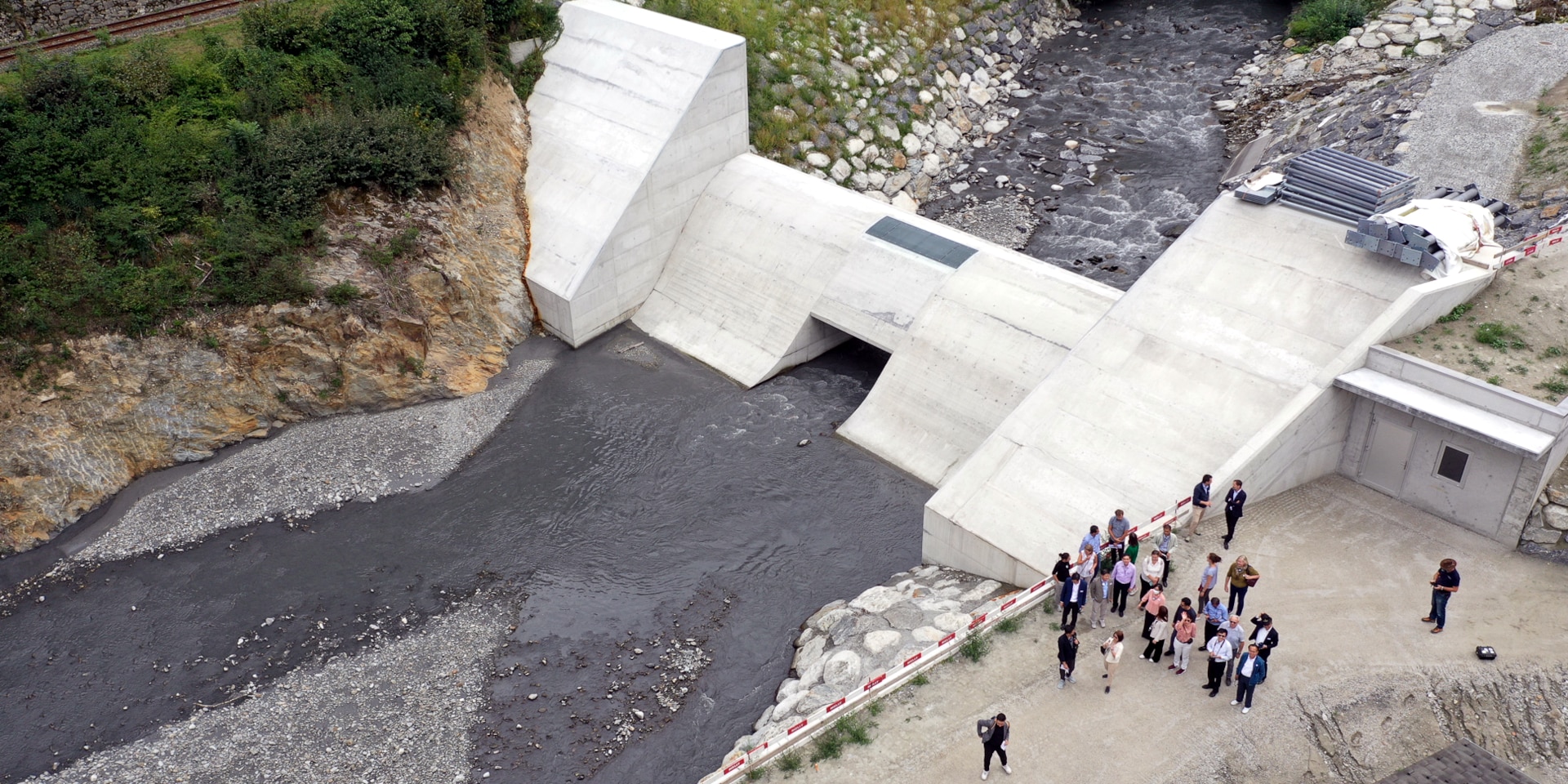
The SDC organised this visit to share technical know-how and experience with two South East Asian delegations. © Dr Eric Bardou
Communicating in a shorthand of technical terms, experts exchange notes as they examine complex diagrams on a computer screen, a crisis unit organisation chart, hazard maps and legal emergency measures. The conference room where the Mekong River Commission (MRC) and the Association of Southeast Asian Nations (ASEAN) delegations are gathered is aptly named: Eaux-Vives. At the invitation of the SDC, two delegations from South East Asia comprised of 14 experts travelled to Switzerland to learn from Swiss expertise in transboundary water management, disaster risk reduction and integrated management of this precious resource. Their itinerary took them from Geneva to Bern, with a stop in Martigny.
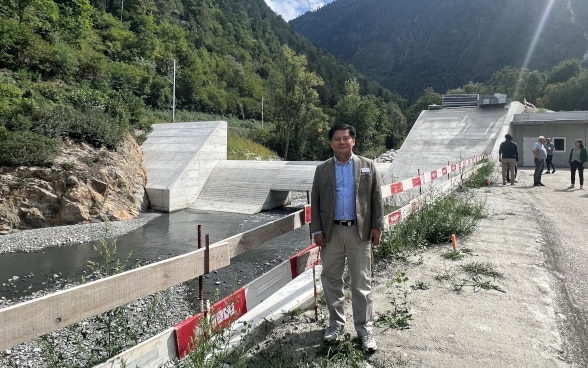
The delegations met on 7 September near a filtering dam on the River Dranse. Secretary General of the Lao National Mekong Committee Phonepaseuth Phouliphanh shared his impressions during a break between two informative presentations by local officials.
What do you see as the main water management challenges in your country?
I would say that in Laos, our water resources present us with both challenges and opportunities. We have an abundance of resources, especially the Mekong River. We can harness the Mekong to generate hydroelectricity and irrigate agricultural land. But the main challenge is the impact of these projects on the environment.
Moreover, such projects also make the region even more vulnerable to flooding, which is occurring more and more frequently as a result of climate change. In Laos and its border regions both the people and the environment are severely impacted. We urgently need to improve our ability to monitor and predict such events.
Based on what you've seen during this trip, what would you say are the similarities between Laos and Switzerland as regards water management?
I think our situations are in many respects quite similar. The most obvious is the fact that both countries are landlocked, which naturally requires coordination and dialogue with neighbouring countries on water issues.
With its enormous hydroelectric capacity of more than 200 big dams, Switzerland is an example of what can be accomplished. Recognising that the Mekong is a precious resource, we also want to develop this sector in a sustainable manner. Switzerland's experience makes it a model of good governance and the sustainable management of dams.
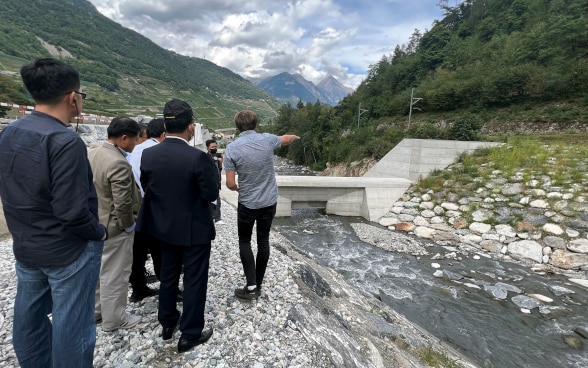
After the theory-based presentations it's time for a short break and a first-hand look at water management in practice. Experts working for the local authorities give a briefing on the recently completed filtering dam on the River Dranse. Michel Roduit, the engineer in charge of managing the region's emergency response in the event of a natural disaster, well remembers the year 2006, when the river broke its banks, causing devastating flooding.
During a brief pause as Roduit explains the technical aspects of the response to the disaster, Phouliphanh comments: "This is exactly the kind of experience and know-how we want to draw on to gain a better understating of how Switzerland deals with such challenges and organises its response at local, national and international level."
We resume our interview.
What expertise can Switzerland, working through the SDC, contribute to the MRC and to your region?
The SDC is a key partner for the region's development. As the commission responsible for promoting and coordinating water resources in the Mekong, we greatly value Switzerland's support and cooperation. This visit is a perfect example of this cooperation. The challenges you face are also our daily reality. We will certainly take a leaf from Switzerland's management of the River Rhône by means of international agreements, for example. Here in Martigny, we examined in detail the organisational chart and monitoring protocols put in place both regionally and nationally whenever there is a risk that a river will burst its banks. This is also an area where we welcome experience and expertise.
I think that the technical and practical focus of this visit to learn about the Swiss approach to water management is a good stepping stone for further cooperation and exchanges between Switzerland and the Mekong region.
On the coach back to Martigny as the second day of the visit draws to a close, we speak with Watt Botkosal, director of the MRC's administrative division. We stay on topic, even when the coach makes a stop at the Roman amphitheatre archaeological site in Martigny. This SDC-organised field trip has offered a number of positive takeaways.
"I'm taking some constructive lessons from my visit to Switzerland. The practical experience we've gained here will definitely be useful and adaptable to our reality. Our main priority is to improve cooperation at local and international level. For example, hydroelectric dams can cause major changes in the flow of the Mekong River: what's done upstream has consequences downstream. Effective coordination is therefore essential, both for the protection of local communities and for the environment.
Transboundary water management cooperation between Geneva and neighbouring France is an important takeaway for us. That's precisely the kind of thing we want to do. This requires discussions at the local level to identify technical issues and challenges, which could then be translated into legislation or policy decisions taken at a higher level."
Links
- Developement and Cooperation – Mekong region (Cambodia and Lao People's Democratic Republic)
- Mekong River Commission (MRC) – Contribution to the basket fund for the implementation of the Strategic Plan 2021-2025
- Mekong River Commission
- Association of Southeast Asian Nations (ASEAN), FDFA
- International Cooperation Strategy 2021-2024, FDFA

